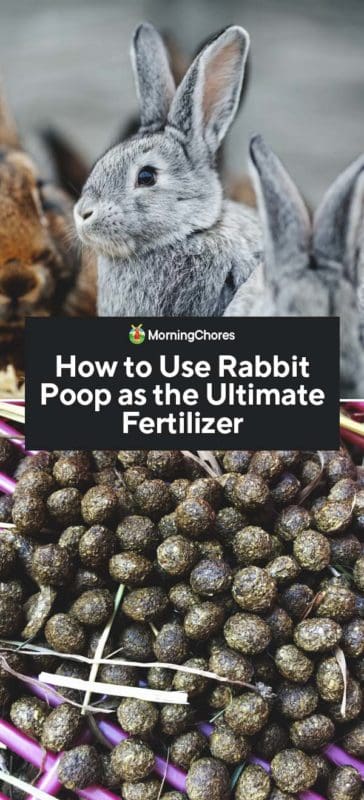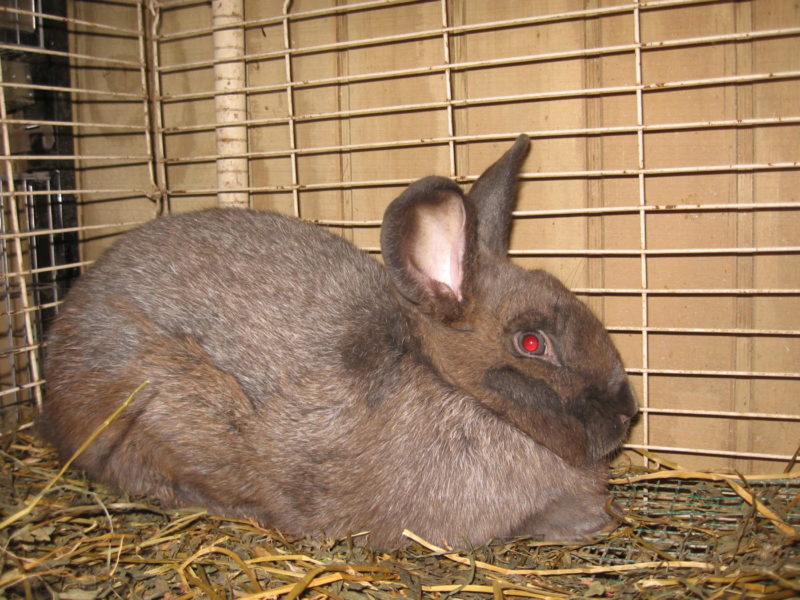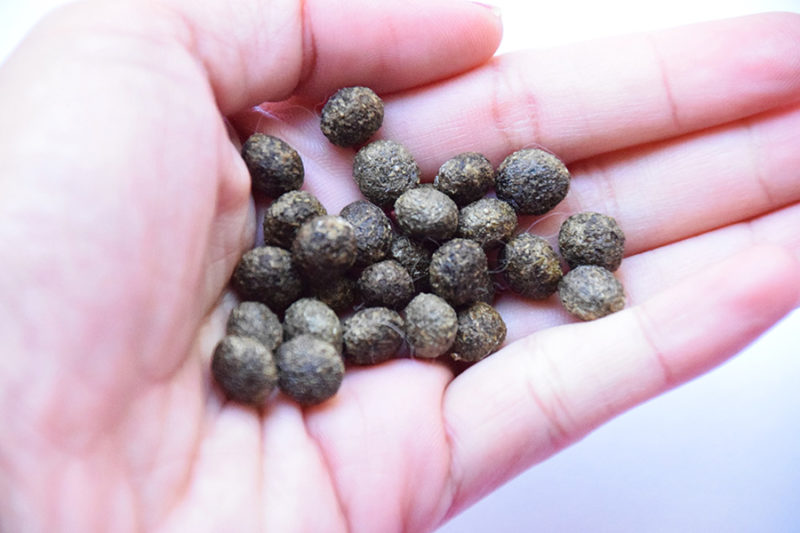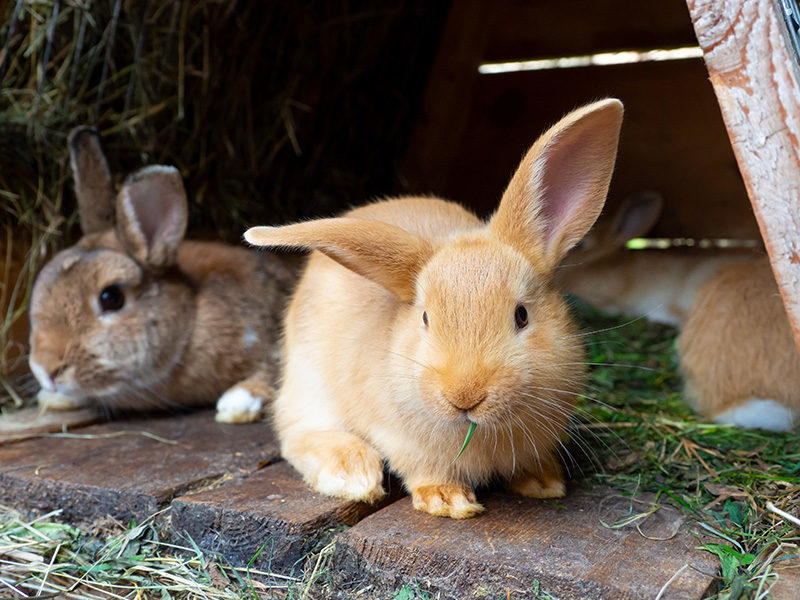How To Use Rabbit Poop In The Garden
Looking for an affordable fertilizer with big benefits? Look no further than the nearest rabbit hutch. Rabbits are small animals that you can keep almost anywhere, and they create tons of wonderful, nutritious fertilizer on the cheap.
Rabbit manure comes in dry, compact pellets that are easy to work with. Rabbit fertilizer has more nutrients than other livestock leavings, such as chicken or horse poop. It doesn't have a strong odor, so it's a great option for urban neighborhoods.
Rabbits are the quintessential urban livestock because they're so uncomplicated and adaptable. It doesn't take a great deal of space or money to get started raising them.
My cousin lives in a townhome in the city and her daughter has a pet rabbit. Her townhome has fabulous windows and she has loads of gorgeous tropical plants, all which benefit from side dressings of rabbit fertilizer.
I, on the other hand, live on a farm. I raise my rabbits in stacked hutches in a stall in my goat barn. This protects them from predators and bad weather. In the summer, I let them out in rabbit tractors to enjoy the sunshine and grass.
Whether you are in the city or the country, a rabbit and their outpouring of pellet-sized fertilizer (what we like to call bunny honey), can benefit your plants and gardens.

What's So Great About Rabbit Fertilizer?

Rabbit manure is high in nitrogen and phosphorus. It doesn't burn plants like some fertilizers because it breaks down quickly. Rabbit manure is dry and doesn't contain as much ammonia or uric acids as many other manures, such as cow and pig.
Fresh rabbit manure is approximately 2% nitrogen, 1% phosphorus, and 1% potassium. The condensed pellets actually have twice the nutrients as chicken manure and four times as much as horse manure.
In addition to the big three nutrients, rabbit pellets contain many macro and micronutrients. The elements of calcium, sulfur, magnesium, boron, zinc, copper, manganese, and cobalt, are all present.
This means that you're giving your plants a well-rounded fertilizer that benefits them in multiple ways. Using rabbit fertilizer increases the nutrients in your garden and adds important texture and tilthe to your soil.
How Do You Use Rabbit Manure?

Use Fresh From Pen
Rabbit manure can be applied right from the pen. Unlike other livestock manure, rabbit poop will not burn your plants, so it's safe to spread while plants are growing.
I like to bury mine so that it doesn't attract flies. One great way to add your bunny honey is to make a furrow next to a row of newly transplanted veggies. Fill the furrow with rabbit manure and cover with an inch of soil.
This will keep flies from being attracted to your garden, and the worms will eagerly come to help with decomposing.
Creating a furrow of rabbit fertilizer adds nutrients to your plants as they grow. In addition, it continues to improve your garden's soil. You can also add a handful of pellets to the hole as you transplant.
In addition, every time you clean out a bed, clean out the rabbit hutches at the same time. If you're a fan of Square Foot Gardening, Mel Bartholomew suggests adding a little fertilizer whenever you remove one plant and add another.
Compost Your Rabbit Manure
Rabbit fertilizer does well in a compost pile. It breaks down quickly and adds lots of nutrients. This encourages microbial activity and helps to break down the higher fiber things like straw or grass clippings in your pile.
Another benefit of rabbit poop in the compost bin is that it's dry so it doesn't have an odor. It works well in smaller, compact composters.
Rabbit manure has a C/N ratio of 12, use our handy compost calculator to get the correct combination with your rabbit manure.
Green Mulching
Rabbit pellets are ideal for green mulching. Spread them in your yard, around fruit trees, and in flower beds. They'll break down and give the soil a boost of nutrients. Bob Bennet, the author of the classic book "Storey's Guide To Raising Rabbits," put his rabbit manure around his roses. Turned out he not only raised national champion rabbits but prize-winning roses!
Compost Tea
Rabbit poop in your compost tea is another fabulous way to make fertilizer.
Here's how to make a rabbit compost tea:
- Place 2 cups of rabbit droppings into a 5-gallon bucket.
- Fill the bucket with water. Place a lid over the bucket.
- Put in a warm sunny spot.
- Stir once or twice a day.
- Let the rabbit manure dissolve over a period of 3-5 days.
- After it has broken down, it won't dissolve all the way, and you can pour it right on to your plants.
Vermicompost
Rabbit manure is great in the worm bin. Your rabbit poo in addition to spilled alfalfa feed is a nutritional smorgasbord for your worms. They, in turn, will finalize the decomposing process and reward you with some of the best organic compost ever!
In fact, rabbits and worms make a fantastic team. You can take this to the next level and put your vermicomposting bins to work right under your rabbit hutches.
Red wigglers are the best worms for this. Aim for 250 red wigglers per square foot of bin space.
How To Create a Worm Bin Under a Rabbit Hutch

If you have a raised rabbit hutch, you can make an ingenious set-up that will take the work out of using rabbit fertilizer in a worm bin. You'll need a hutch that is about 3 feet off the ground. The bottom of the enclosure should have an area of 1/2-inch wire mesh floor so that the poop will fall through.
You don't want the entire base to be wire – your rabbits need a nesting box or sleeping pad with a solid bottom so that the bunny has a draft-free area and a place to get off the wire.
Underneath the hutch, build a wooden box that is at least one foot deep. In the base of your worm bin, add a 4-inch layer of carbon materials. Use things such as decomposing leaves, peat moss, shredded paper products, old hay or straw.
Moisten the material, mix in an inch of rabbit manure and wet everything again. This helps create the right environment for the worms. Put your worms in the bin, place the bin under the hutch, and watch the magic happen.
How Many Rabbits Do You Need?
You're probably wondering how many rabbits you need to have enough fertilizer for your garden areas. Probably not as many as you may think. Rabbits are little poop machines.
A large breed rabbit such as a New Zealand can poop one half a pound of manure every day. That adds up and would equal about 14 pounds a month.
If you decide to raise rabbits as a child's 4H project or as a side income, then you would be rolling in bunny honey. A colony of 10 rabbits can produce 40-60 pounds of manure a week, depending on what breed they are. You could even go in the business of selling rabbit manure to other gardeners.
Since they don't have a strong odor and are easy to handle, rabbit fertilizer makes a great side business. Fill up 3-gallon buckets as you clean up after your bunnies. You can then sell the rabbit pellets to gardeners or maybe trade for something. Rabbit manure is a valuable commodity.
Designing Rabbit Hutches To Catch Manure
There are several different ways that you can house your rabbits. Many professionals hang wire cages from the ceiling. This allows the pellets to drop off and fall to the ground.
However, if they fall to the ground, you'll have to filter out the dirt and bedding on the ground from your pellets. A more back-friendly way is to attach a long tarp under the wire cages, making the tarp higher on one end.
That way the pellets roll down the tarp slide and into a waiting bucket. Then it's easy to pick up the bucket and dump the poop on the compost pile or in the garden.
Are you planning to have one or two rabbits for pets? You could go with a nice backyard wooden hutch instead. In keeping with the wooden design, you can build a poop ramp to help funnel the leavings.
Under your hutch, you install a wooden ramp that is the same width as your hutch. Place barriers on the sides so the poop doesn't fall off the ramp. Then just let the manure roll down the ramp and into a bucket.
The Bottom Line on Rabbit Fertilizer

Rabbits make great livestock or pet for people with small spaces and small budgets. They are easy to raise and – as the old joke goes – they multiply quickly.
The best thing about rabbits is not that they are easy to raise, or that they are cute and cuddly. Rabbits produce the best fertilizer ever!
Was this article helpful?
Yes No
How To Use Rabbit Poop In The Garden
Source: https://morningchores.com/rabbit-fertilizer/
Posted by: martinarro1982.blogspot.com

0 Response to "How To Use Rabbit Poop In The Garden"
Post a Comment